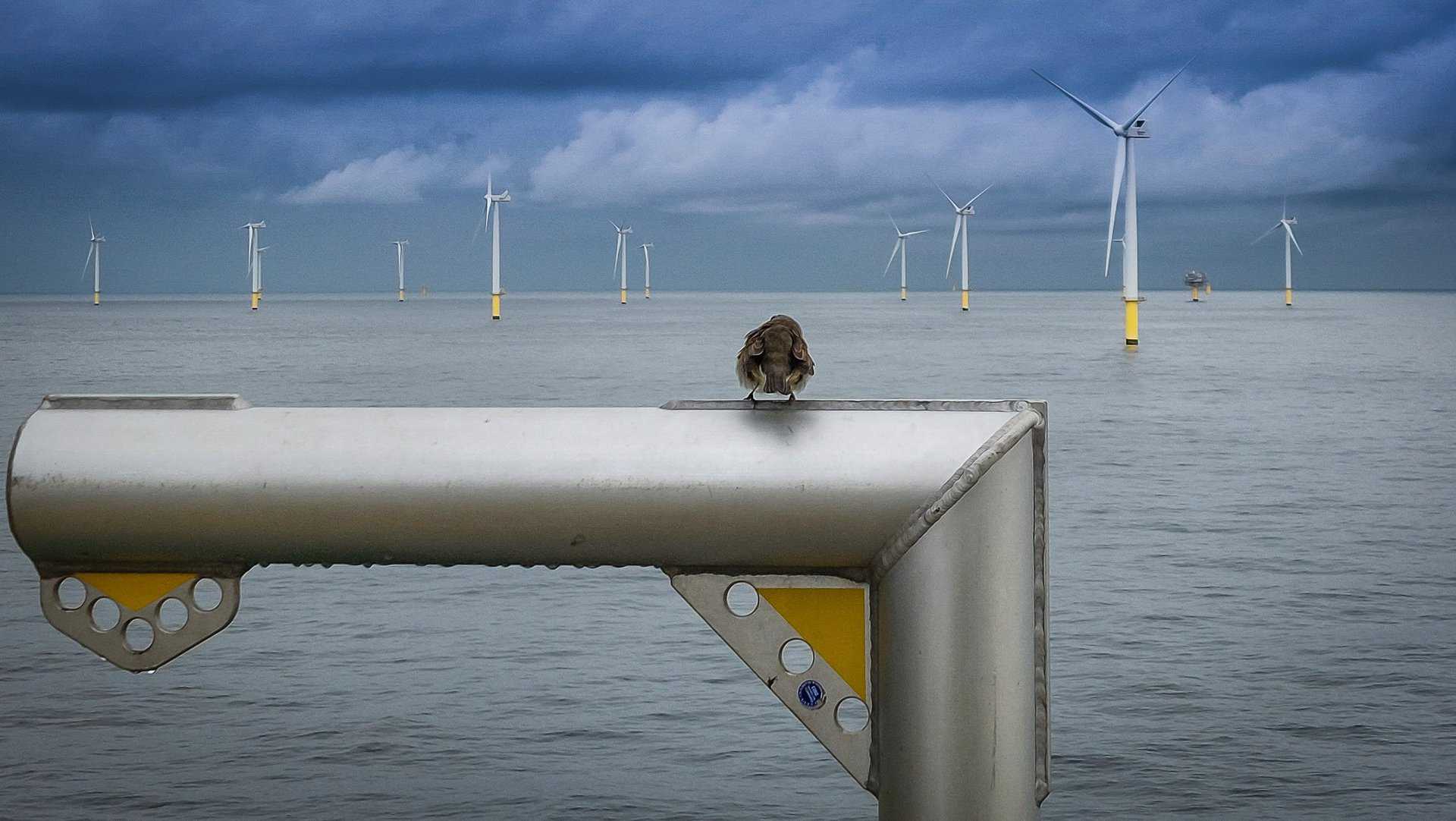TRANSITIONING TO FOSSIL FREE LIVING
A blackcap (warbler) perched on a hercules davit crane of a vessel that installs wind turbines offshore, takes rest during migration across the sea as it is seen contemplating on a rapidly changing seascape with new distant horizons.
The sun is rising over the North Sea at the dawn of a new era of fossil free living, in an attempt to decarbonize the skies, to help counter a changing climate. The quaint romantic picture of windmills of Amsterdam past are now being replaced by huge, sleek and some would say elegant looking wind turbines. Essentially, there are three main parts to a turbine, rotor blades and nacelle (that houses the generator) which is mounted on a tower – here, they are all pre-assembled in a yard in the Port of Rotterdam before being transported offshore for installation. When put together a turbine stands very tall with a 200 metre rotor diameter capable of generating 11 megawatts.
The images in this gallery are taken during a journey on a fully loaded installation vessel to the offshore wind farm which first takes you through the Port complex – where traffic is very busy with tugs, barges and vast container ships – surrounded by an array of refineries, autonomous robotic cranes and computer controlled chariots to enable the quick transport of bulk and other goods between the European continent and other parts of the world. The blade rack is located at the stern of the vessel where blades extend some 35 metres beyond the side of the vessel, so great care is taken to navigate waters with such a wide load.
Once onsite, the vessel jacks-up (like stilts on the seabed) next to a monopile with a yellow painted transition piece which the tower will sit on. The monopile is piled some 20 metres into the seabed by a massive ship crane at a time earlier. A view is taken behind a crane operator who sits in one of the largest ship cranes in the world as he checks above that all cables high up on the boom are where they should be before piling begins, and lifting weights up to potentially 5000 metric tonnes.
Before lifting the tower, nacelle and blades into position, checks are made by engineers on equipment to ensure all is well including high up on the boom tip. When wind speed and risk of lightning strikes allow, the crane is ready to mobilise and begin lifting. Again the crane is massive, controlled by an operator who is surrounded by a myriad of TV monitors, joy sticks, flashing lights and buttons to ensure careful and delicate positioning of the various turbine components. For the blades, an operator uses a control panel secured to his waist to control the blade gripper called ‘Janett’ that manoeuvres the blade into the hub of the nacelle.
Given the huge weights an installation vessel is able to handle, the design of cranes, jack-up legs and so on may look chaotic but there are engineered patterns to be seen, for example, in support crossbars governed by structural and safety requirements and needs for the work in hand. Under certain weather and lighting conditions far out at sea, an ever changing abstract and surreal view of operations can be captured – and more so when the turbines are installed and the wind farm grows!


